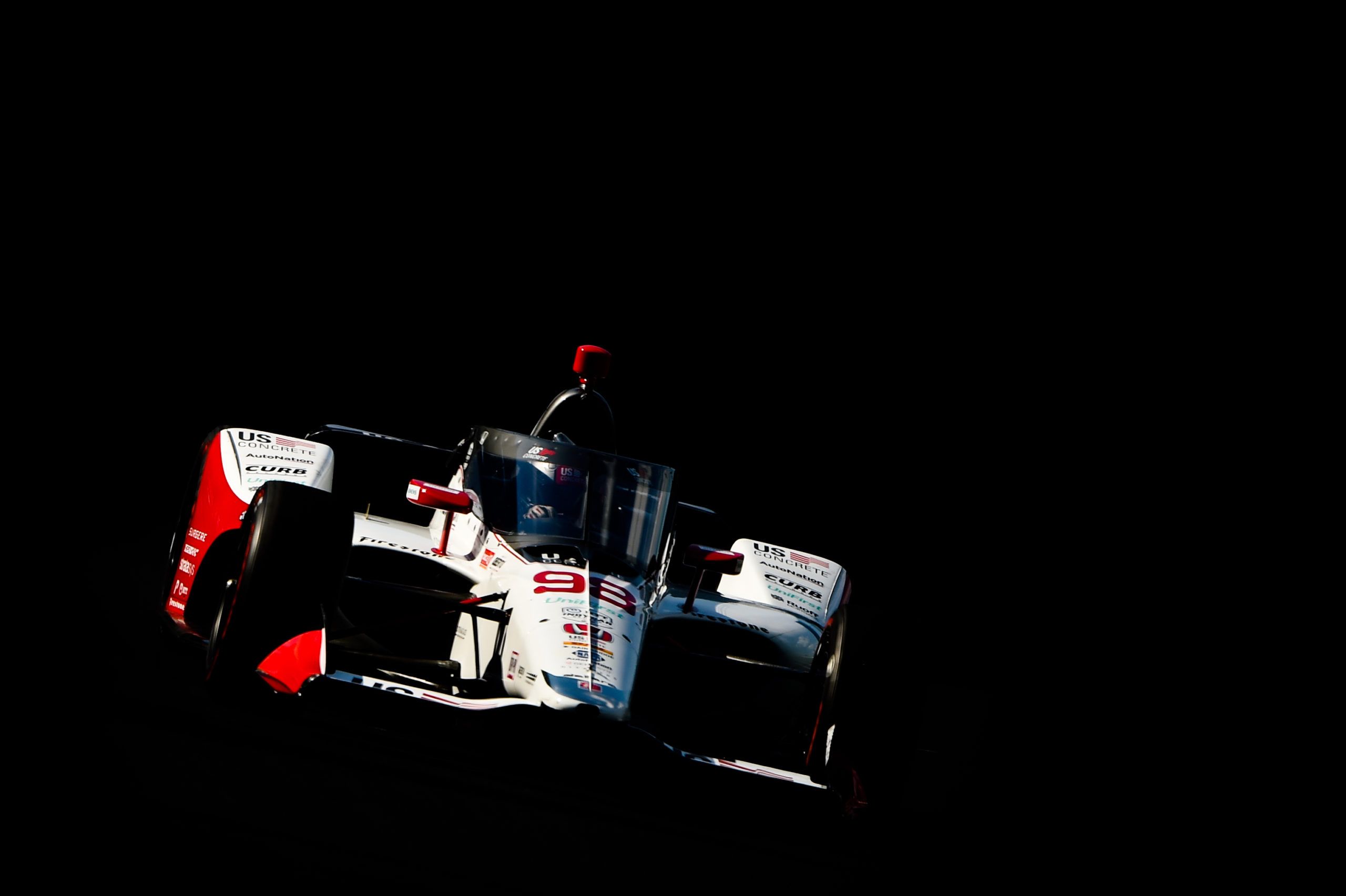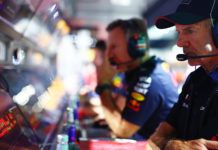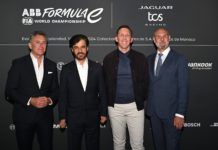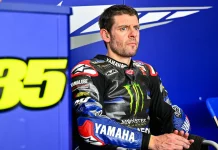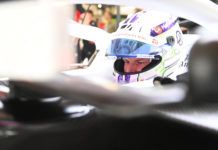For the Indy500, Marco Andretti took pole for Andretti Autosport, leading Dixon of CGR with an average speed deviation of just 0.017 mph.
Indy500 Qualifications Day 1:
The first day of competitive running for the Indy 500 saw few moments truly worthy of note, but nonetheless one big takeaway from the day was the incredible dominance of Honda, who clearly had the measure of the Chevrolet cars throughout the day.
The deviation of pace between the two manufacturers was so distinct, in fact, that Chevrolet-powered entries occupied eleven out of the bottom 13 positions on the board, despite there being a 17/16 split of the field.
Somewhat unsurprisingly, the slowest car on track on Saturday was a Chevrolet, and specifically, it was Ben Hanley of Dragonspeed, the Briton posting an average speed of just 222.917 mph across his four laps to qualify 33rd.
Ahead of him was JR Hildebrand – also in a chevy – as the Indy500 veteran managed to maintain an average speed of 226.341 mph in his attempt. Sage Karam, meanwhile, put his D&RR car in front of his teammate in 31st position, with an average speed of 227.099 mph.
Row ten will be book-ended by Max Chilton of Carlin, who set an average speed of 227.303 mph to qualify 30th. For AJ Foyt Racing, Charlie Kimball’s four-lap average of 227.758 mph was enough to secure 29th, while Helio Castroneves came only 28th in his Chevrolet-powered Penske with an average speed of 228.373 – a result that underlined the uphill battle faced by Chevy teams.
The lowest-starting Honda for next week’s Indy500 will be that of James Davison, who is representing the lengthily-named Dale Coyne Racing with Rick Ware Racing, BYRD and Belardi Auto Racing team in 27th place after he set a speed of 228.747.
Davison will start next to Fernando Alonso on the ninth row of the grid, the Arrow McLaren SP setting a four-lap average of 228.768 mph – only good enough for 26th position. He will start At the front of this row will be Simon Pagenaud of Penske – the 2019 Indy 500 champion – who set an average speed of 228.836 mph.
Two AJ Foyt cars in Dalton Kellett and Tony Kanaan occupy 23rd and 24th, each setting averages of 228.880 and 229.154 respectively. They will be led by Will Power of Penske at the start of the race, the Australian only managing a four-lap mean of 229.701 mph.
An outlier in the bottom-half of the grid, the seventh row is predominantly Honda-powered, with Arrow McLaren SP’s Oliver Askew (229.760 mph) trailing MSR’s Jack Harvey and DCR’s Santino Ferrucci, the former of whom posted an average of 229.861 mph, and the latter of whom put up 229.924.
The poorest-performing car of three well-off ECR Indy500 entries, Conor Daly, lines up 18th after he set an average of 229.955 mph, while Zach Veach – a member of the dominant Andretti team – saw the checkered flag as he sat a disappointing 17th, having gone an average of 229.961 mph over his numerous laps.
Ed Carpenter, driving for the team of the same name, was the lowest-down of 16 Indy500 cars that broke 230 mph, as he went .211 mph faster than this milestone in his average of four laps. In qualifying, he was led by another Chevrolet in Arrow McLaren SP’s Patricio O’ward, after the Mexican did well to outperform both of his teammates and set an average lap speed of 230.213 mph – just .002 mph faster than Carpenter.
The last of the CGR cars contesting the Indy500, Rosenqvist, managed 14th with a lap average of 230.254 mph, while Josef Newgarden – outperforming all of his Penske teammates – came 13th, boasting 230.296 mph.
Row four – the last before the Fast Nine – featured three Hondas, the first of whom was Spencer Pigot for RLLR & Citrone/Buhl Autosport (230.539 mph), who was led by CGR’s Marcus Ericsson (230.566 mph). This row was headed by Colton Herta, who will start next Sunday’s Indy 500 in tenth after he managed 230.775 mph.
The Fast Nine included the likes of Takuma Sato (RLLR), Graham Rahal (RLLR), who had a very close call towards the end of the session, rookie Alex Palou (DCR), and even Rinus Veekay – another first-year, this one powered by Chevrolet. The ECR driver was the only of the Chevy contingent in the group.
Indy500 Qualifications Day 2 (Fast Nine):
In the ‘Fast Nine’ shootout, Takuma Sato was the first out of the pit lane, as he displayed impressive consistency in his run, in which he averaged 230.725 mph. His RLLR teammate Graham Rahal followed, and though the American was quick in the first three laps, understeer into turn one of his fourth lap ultimately squandered any chance of a truly competitive attempt, as he only managed a 229.380 mph average in the end.
DCR w/ Team Goh driver Alex Palou followed up Rahal, and stunned the pit lane as he entered turn one on his second lap at 240 mph. His run was good enough to split the two RLLR cars, but a poorer final two laps prevented him from taking provisional pole, as his average dropped to 229.676 mph.
It was another rookie to be the fourth to make his attempt, this one the sole Chevrolet in the group: ECR driver Rinus Veekay. Like Palou, he benefitted from a tailwind into the first turn to achieve incredible speed, and he maintained a consistent speed across his four laps. His run – -with an average of 230.704 mph – was good enough for second place, but he was soon demoted to third place by Scott Dixon of CGR, whose lap of 231.051 mph put him on provisional pole.
A slight wind shift during Andretti driver James Hinchcliffe’s run saw his speed drop marginally, and he ultimately slotted into a provisional fourth with his average of 229.870 mph. Another Andretti was the next out, this time Alexander Rossi. The American – expected to be a frontrunner – had a disappointing four laps, averaging only 229.234 – a result good enough for only last.
Ryan Hunter-reay’s average of 230.648 mph placed him a provisional fourth with Marco Andretti – driving for his father’s team – still to go. Andretti – the fastest in several days of practice leading into Qualifying – was level with Scott Dixon after his first two laps, and managed to pip the Kiwi with a strong final lap.
It will be the first member of the Andretti lineage on pole in modern history. Joining him on the front row will be Dixon and Sato, as Veekay lines up fourth. Hunter-reay ultimately came fifth, and James Hinchcliffe, sixth. After his successful run, Palou finished the session in seventh, leading Rahal and Rossi.
Here’s what drivers said of the aeroscreen revisions, some of which are being used at IMS

